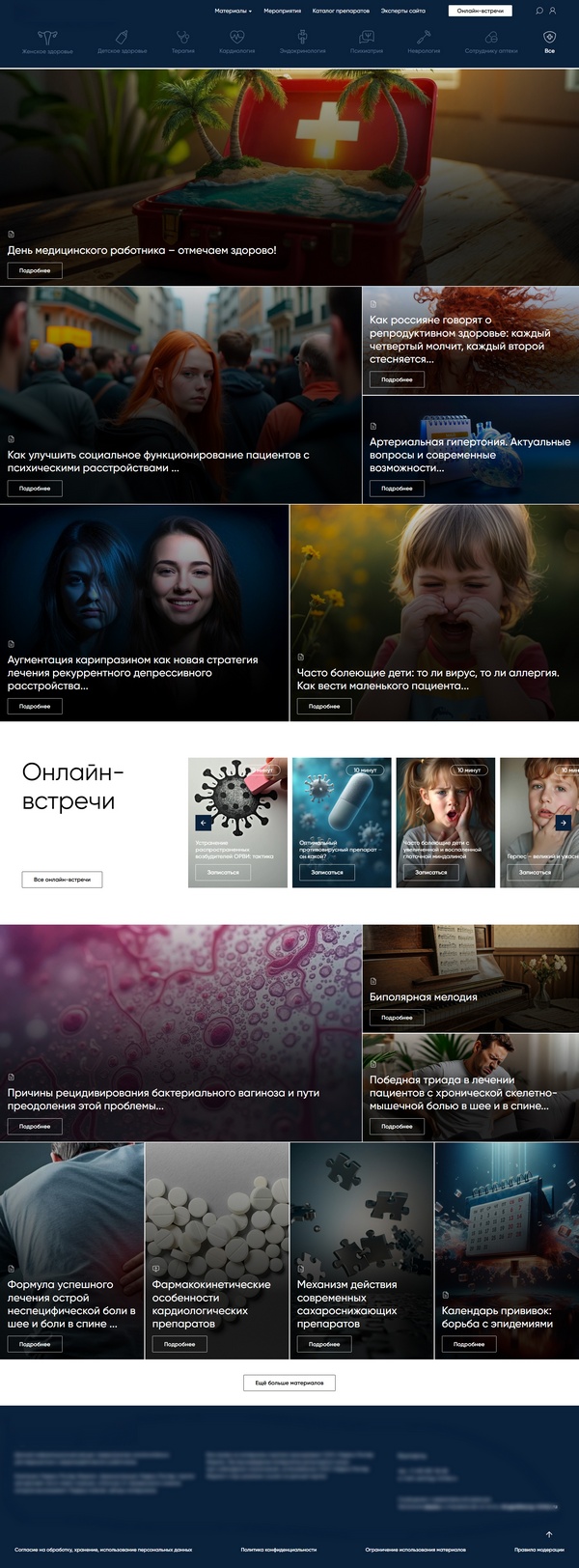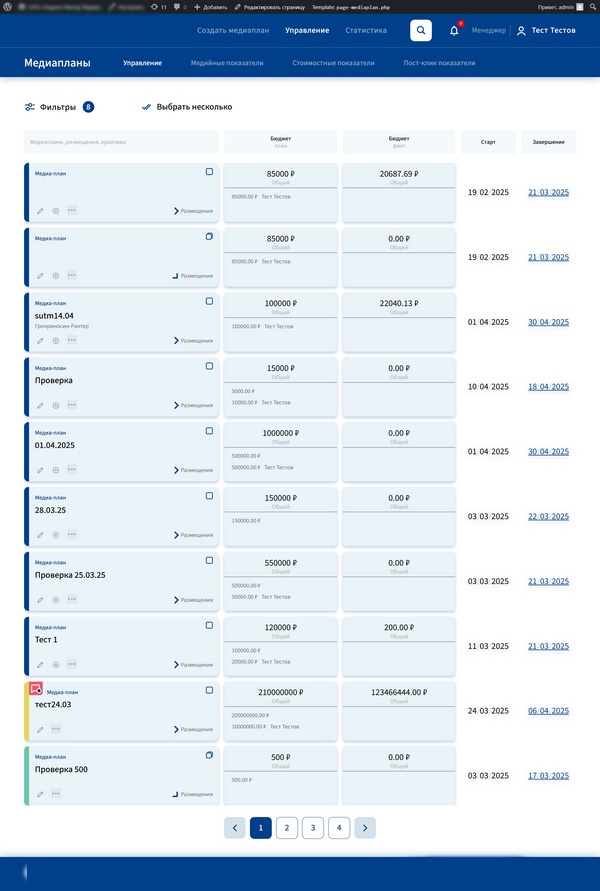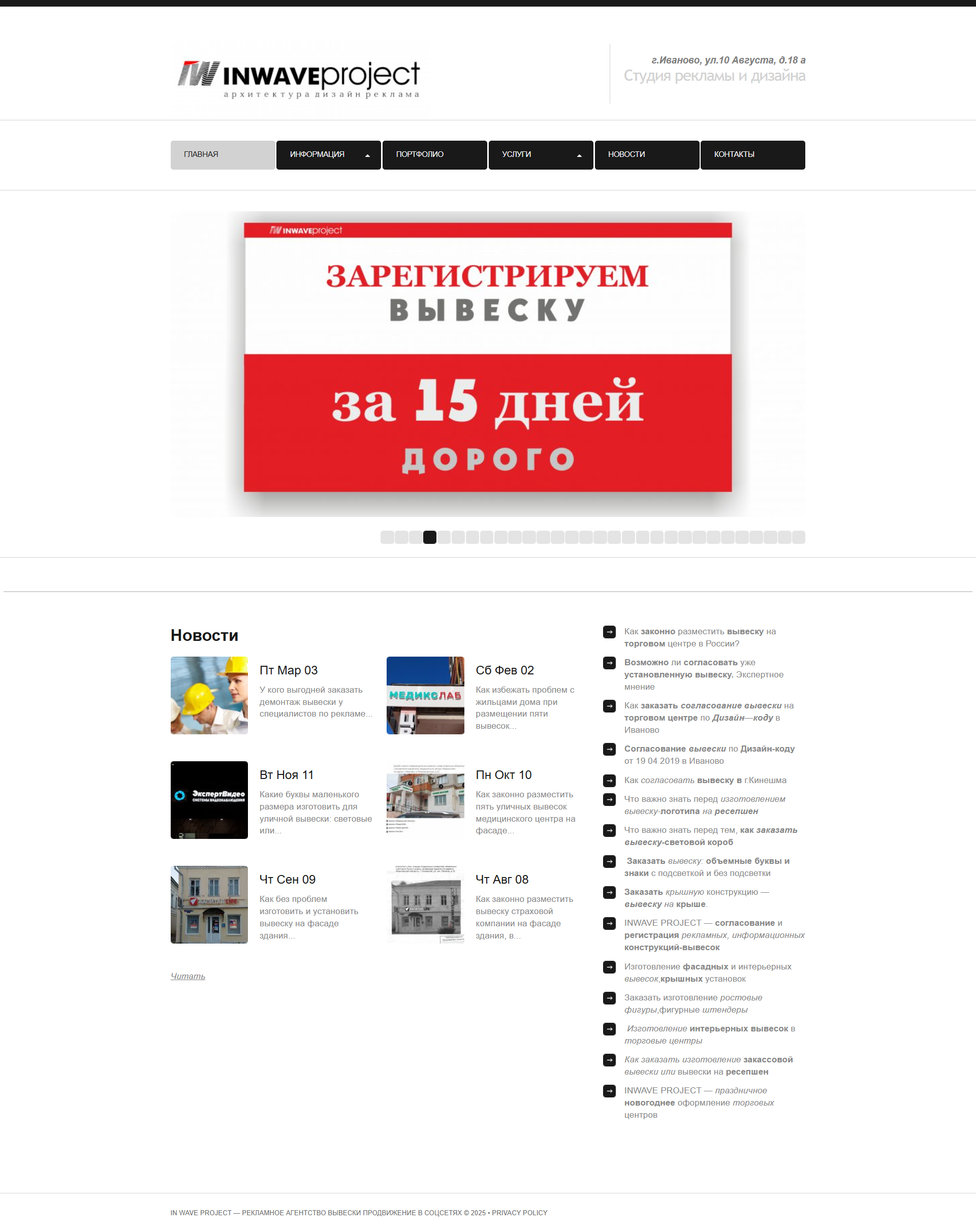Project Objective
To create a modern, responsive WordPress website for a gynecological product aimed at restoring vaginal microflora.
The primary tasks included implementing adaptive front-end design and migrating all existing materials — such as product information, composition, usage instructions, clinical trial results, FAQs — into a new, well-structured platform.
Challenges
The original resource was fragmented and outdated, which posed several problems:
- Outdated infrastructure: A mix of legacy HTML pages and scattered PDF files made it difficult for users to find relevant and up-to-date information
- Poor mobile experience: The non-responsive design led to layout issues on smartphones and tablets, contributing to a high bounce rate
- Disorganized content: Information for patients and healthcare professionals was stored in separate sources without a unified structure, causing navigation confusion and content duplication
- Credibility concerns: Clinical data and references to authoritative sources were sometimes inaccurate or poorly presented, lowering user trust
- Time constraints: The client needed to launch the updated version quickly without compromising scientific accuracy or user experience
Delivered Solutions
Content Analysis and Structural Planning
- Collected and organized all original materials: product descriptions, usage instructions, composition details, application protocols, clinical trial data, infographics, and FAQs
- Identified core user groups:
- Patients (reproductive-age and postmenopausal women)
- Gynecologists and OB-GYNs
- Nurses and pharmacists
- Designed an intuitive site architecture addressing the needs of each group:
- Homepage: Brief product overview with quick access to key sections
- About the Product: Mechanism of action, composition, indications, contraindications
- How to Use: Step-by-step guidance, dosage, treatment duration
- Women’s Health Protection: Clinical studies and real-world use protocols
- Articles: Expert insights, research summaries, updates in gynecology
Content Migration and Systematization
- Extracted and reformatted content from outdated HTML pages and PDFs
- Reviewed and aligned all medical content with current professional guidelines
- Optimized images for fast loading without sacrificing quality
Responsive Design and Front-End Development
- Created a custom WordPress theme based on approved UI/UX mockups using modern CSS technologies:
- Flexbox and CSS Grid for modular layouts
- Media queries for smooth responsiveness across desktop, tablet, and mobile
- Established a clean and readable visual system: accessible font sizes, high contrast, well-spaced headings and paragraphs
WordPress Integration and Plugin Configuration
- Installed WordPress on the client’s server and secured the site with an SSL certificate
- Integrated key plugins:
- Yoast SEO for metadata, Open Graph tags, and auto sitemap generation
- WP Super Cache + Autoptimize for caching and CSS/JS minification
- Contact Form 7 + Flamingo for feedback forms and submission logging
- Advanced Custom Fields (ACF) for structured management of content like ingredients and clinical data
- TablePress for displaying formatted clinical trial tables
- Configured custom user roles:
- Editor (Marketing Team)
- Medical Editor (Physician) — to allow independent content management
Testing and Optimization
- Cross-browser testing (Chrome, Firefox, Safari, Edge) and device testing (iOS, Android)
- Verified feedback forms for proper email delivery and dashboard tracking
- Enabled lazy loading and script/image minification, reducing homepage load time by 35%
- Set up URL redirects from the old site to preserve SEO ranking and avoid broken links
- Verified semantic markup for key sections to improve search engine snippets
Results
- Website launched on schedule with no critical issues
- All content — including product info, usage instructions, and clinical data — centralized in a unified and consistent structure
- Intuitive navigation for both patients and professionals:
- Clearly defined sections: About the Product, Articles, Women’s Health, How to Use
- Responsive design significantly improved mobile experience — mobile traffic increased by 60%
- Page load time reduced by 35%, positively impacting bounce rate and engagement
- The client received a fully self-managed WordPress platform:
- Marketing and medical teams can now independently publish new articles, update instructions, and upload trial data
- SEO metadata and sitemaps auto-update via Yoast SEO
Conclusion
This project not only modernized the look and structure of the website but also consolidated all product-related information into a single, reliable resource. With a well-thought-out architecture, responsive design, and content optimization, the platform now offers a seamless and professional experience — for both patients and healthcare professionals. We’re proud to have helped our client build an effective tool for education and support in the field of women’s health.














